No Results Found
The page you requested could not be found. Try refining your search, or use the navigation above to locate the post.
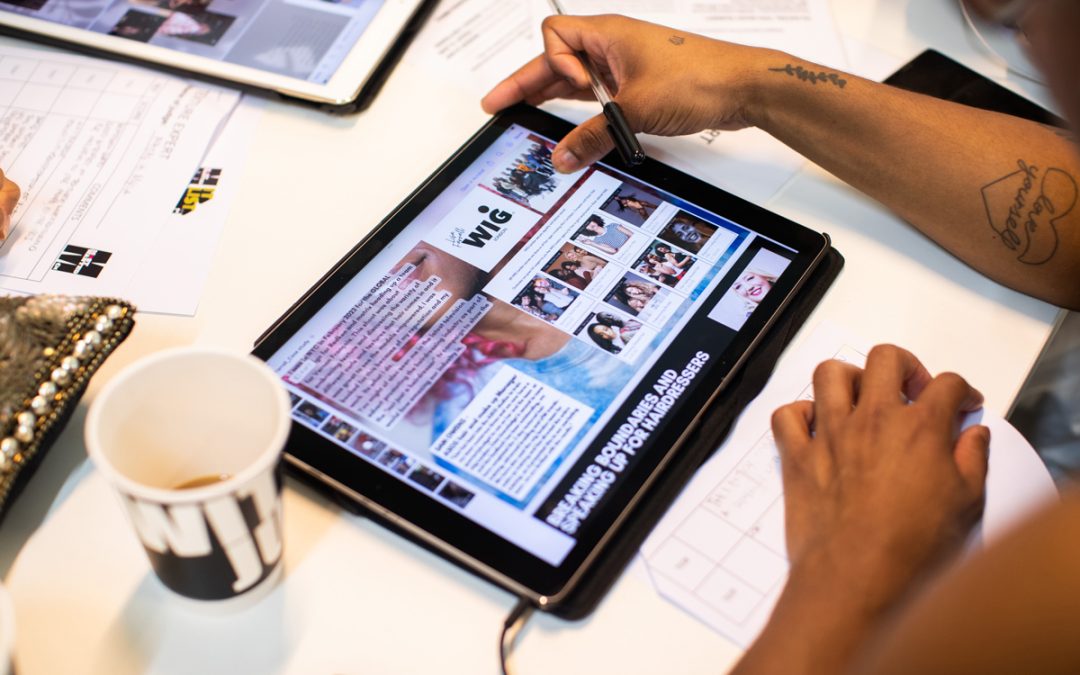
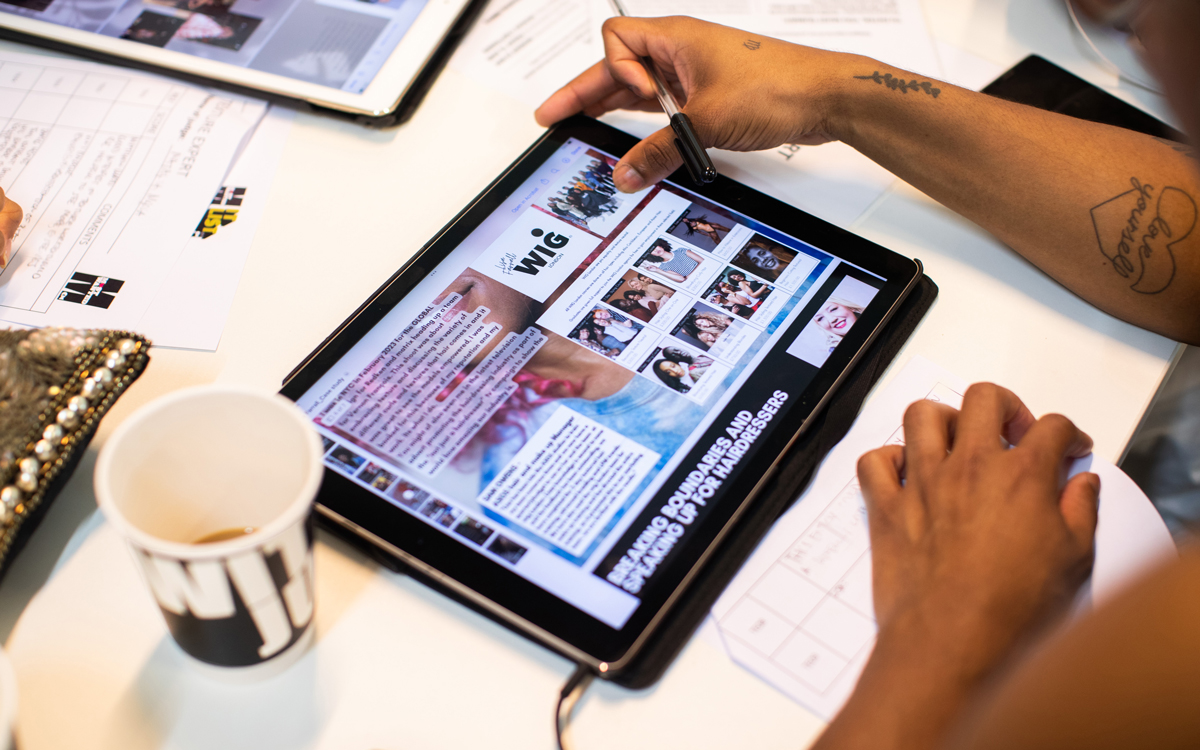
1: Don’t miss the deadline.
It may sound obvious, but set 50 alarms and reminders, highlight the date on your calendars, pin a giant note to your wardrobe door… 9pm, Monday 20 May is the cut-off for submitting your completed entries.
2: There’s an age limit for It Listers.
If you’re entering the It List, you must be aged 30 or under at the competition closing date (Monday 20 May), and proof of age is required at the time of entry. Make sure you’re within range – and if you’re not, remember, there is no age limit for Most Wanted.
3: Re-check the category criteria.
Each category asks for specific entry content, and how you supply this content differs between them. So, make sure you provide precisely what’s stated within the criteria – and if you’re entering multiple categories, don’t assume the same applies. To further hammer home the importance of this point, we provide our judges with criteria for entry, and this is what they refer to when delivering their scores. Missing content = missing the mark.
4: Keep to the page counts, timeframes and file delivery formats.
After pouring time and energy into your entries, don’t let an oversight like exceeding the maximum number of PDF pages, or going over the stated video duration, be your downfall. To avoid disqualification, stick within the limits and adhere to the file delivery instructions as outlined on the category page for the award you are entering. Again, these details can differ, so check and check again, to make doubly sure you aren’t over- – or incorrectly – submitting.
5: Don’t forget your ‘supporting imagery’.
It’s a small but crucial detail; each category asks for some ‘supporting imagery’, which may be used to promote your success if you reach the finals. We need it, so don’t forget it! For It List categories, this also includes proof of age (such as a copy of the picture page of your passport, your driving licence, or your birth certificate). Omit nothing!
6: Supply correct – and your OWN – details on the entry form.
When you upload your entries, you are required to complete an online entry form. This part’s vitally important, because if the judges put you through, we use the details you provide to showcase your success as a finalist and to keep in touch throughout the next stages of the competition. The details must be your own, as the entrant (they cannot be those of a third party – for example, a PR representative), so take a minute to check everything’s present and correct before you hit ‘upload’.
So, that’s it – six final checks to help you deliver your entries in line with requirements. For general guidance on how to enter, and answers to frequently asked questions, visit the ‘entry instructions’ sections at the Most Wanted and It List pages.
Now, go forth and master MWIT!

The page you requested could not be found. Try refining your search, or use the navigation above to locate the post.
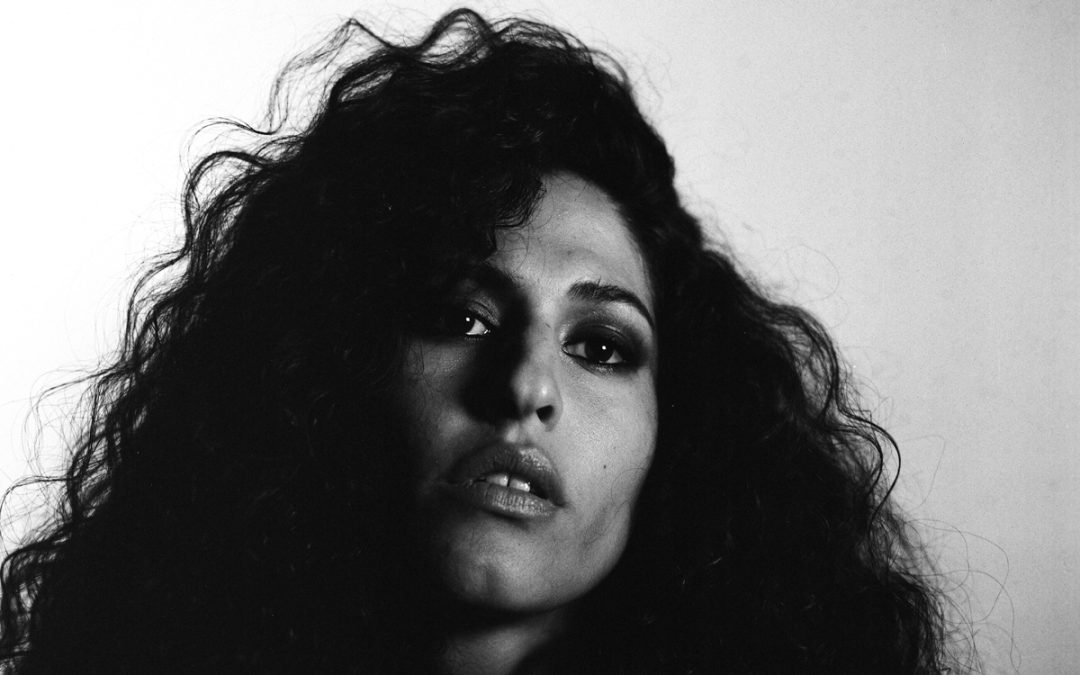
Curated by barber Yasemin Hassan and captured through the lens of photographer Yeliz Zaifoglu, the photo series and exhibition Talking Textures dives deep into the intricate relationship between beauty, cultural identity, and the resilient nature of hair, especially within the Southwest Asian & North African (SWANA) communities.
Hosted at Ugly Duck London, Yasemin sees Talking Textures as more than an exhibition; it’s a movement to celebrate, educate, and redefine the cultural significance of textured hair. Spanning across 26 photographs, a short video, and a panel discussion that was held on 12 April, the project seeks to bring to light the challenges, beauty rituals, and the profound connection between hair and cultural identity in SWANA regions.
Yasemin herself has emerged as a pivotal figure for individuals with textured hair in London, particularly within the SWANA community. While that’s thanks in part to extensive experience on high-end fashion shoots and London Fashion Week, it’s also coupled with personal conversations within her community. Her mission is to “decolonise” perceptions of hair and address the underrepresentation of SWANA identities in the hair industry.
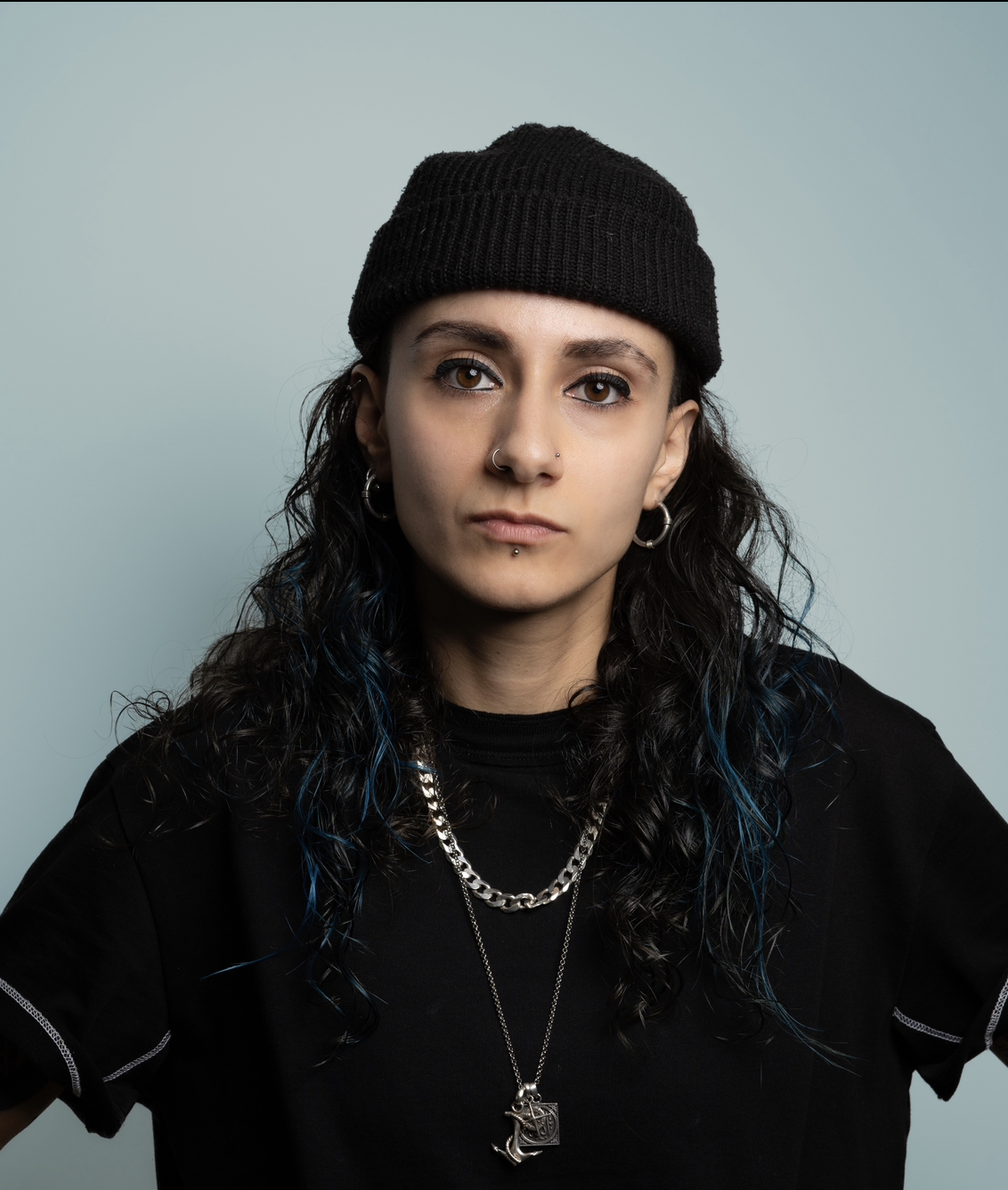
Working closely with Dania Arafeh, founder of 3EIB – a SWANA fashion platform reclaiming the Arabic word 3Eib, meaning ‘shame’ – this project is a reaction to the underlying shame that SWANA individuals often experience from others within their own cultures, as well as what’s taught in the mainstream media about beauty.
Yasemin breaks down the concept behind each image, and the powerful message each shot conveys…
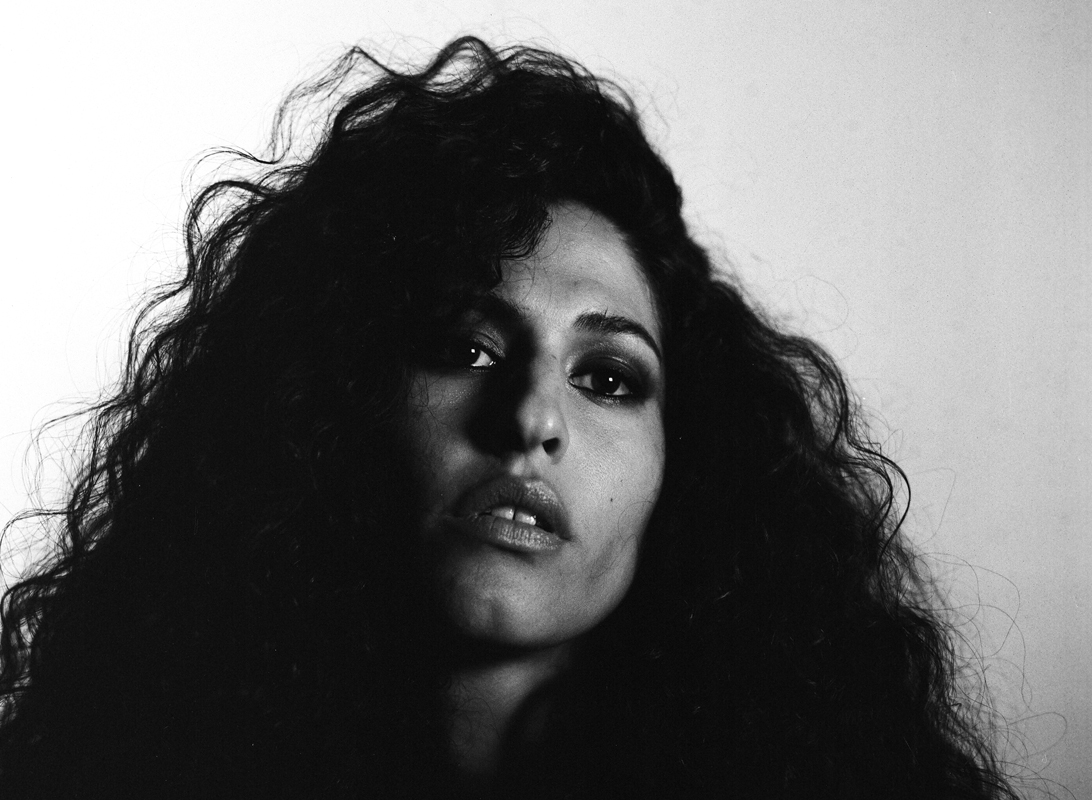
Reclaiming Control
Riyam Salim
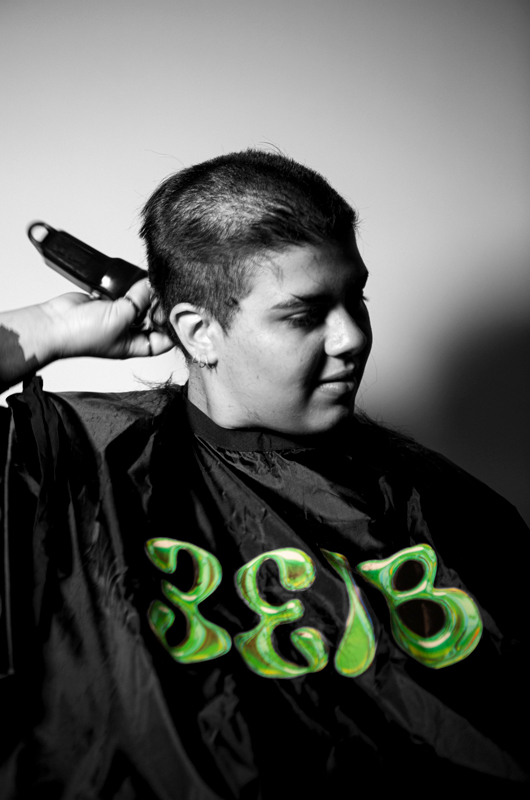
Reclaiming Control
Michaela Mousicous wearing 3EIB
Hair makes us feel powerful. We use our hair to reclaim our identity. Talking Textures explores this by considering the amount of people that go to a salon after a big life change and want to consolidate this with a drastic hair change. These images in the series are about power and taking control over our hair.
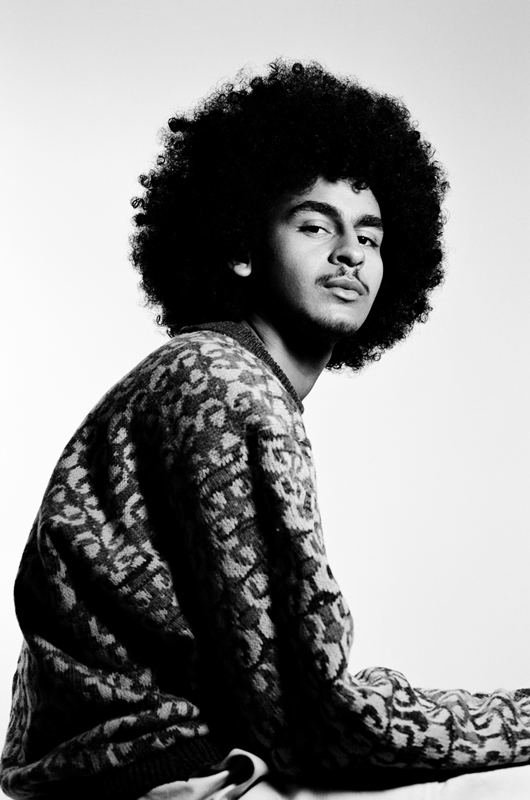
Carving Imperfections
Ali Nasreldin wearing Mehdi Studio
The media often idealises the ‘perfect curls’ – no frizz and a solid, clean shape when focusing on afro textures. In the full series of images Talking Textures plays on the phrase ‘bedhead’ to contrast to perfect curls.
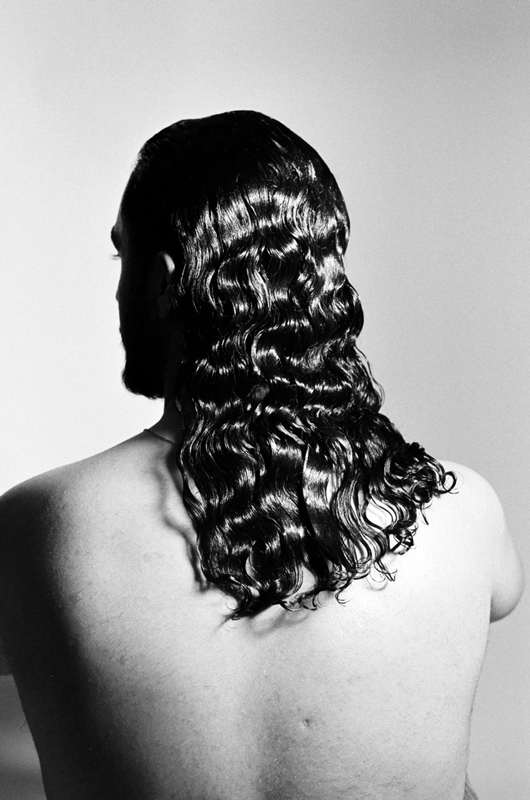
Changing Shape
Peyam Zangana
People with curly hair often talk about it being ‘too big’ and ask me to make their hair sit flatter. In full series collection, Talking Textures celebrates the shape using the concept of ‘hat hair’, contrasting to this image which is the unrealistic flattened hair shape.
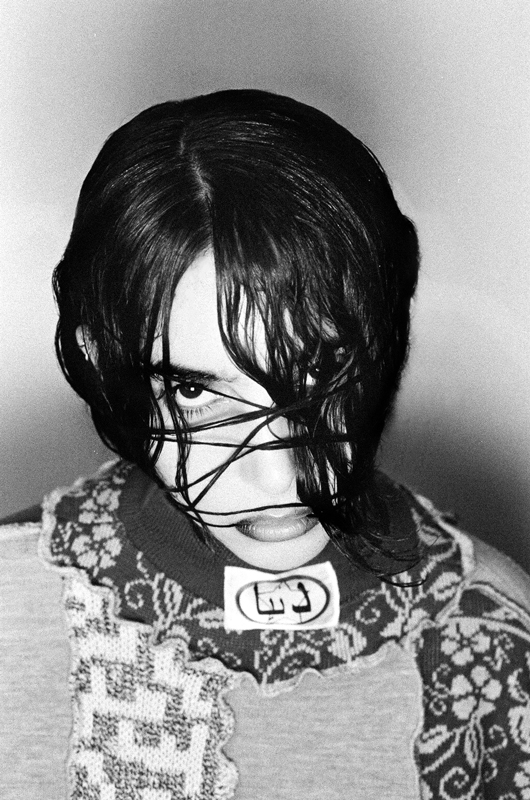
Masking Identity
Eman Alali wearing Isis Dünya
Many people use hair length and fringes to mask and hide their SWANA features. Talking Textures plays on the use of hair as a mask by using the concept of ‘straggly ends’ to do this.
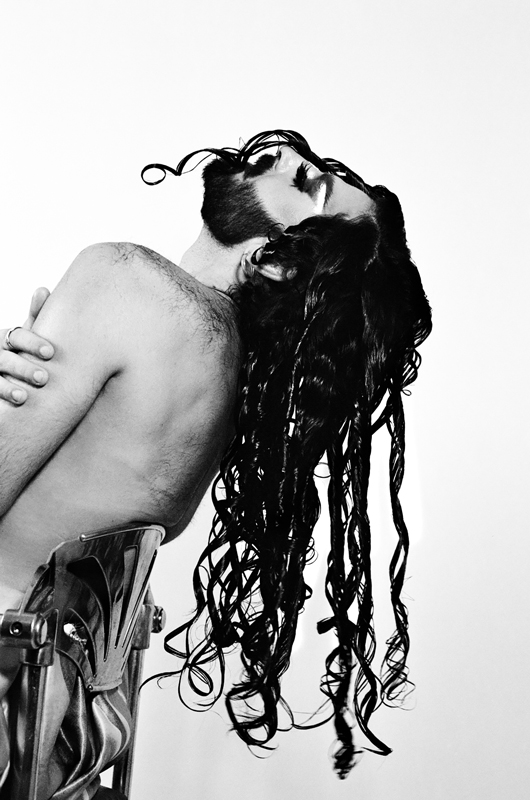
Embracing Femininity
Tahini Molasses wearing Ziyad Buainain
Talking Textures closes the series by questioning: What is femininity? Does femininity have to be gendered within SWANA communities? Many women idealise long hair as being the height of femininity and beauty. The final set of images through this concept makes the statement that femininity can be unconventional.
Things fall apart, it’s inevitable, but it’s how you respond to failure and grow from it that will lead to success.
Concerned for the welfare of your colleague or client? Celebrity hairstylist Sam Kerswell shares his first-hand experience, so you know how best to help.
Session stylist Laura Chadwick shares her top tips for success when styling onset of a music video.
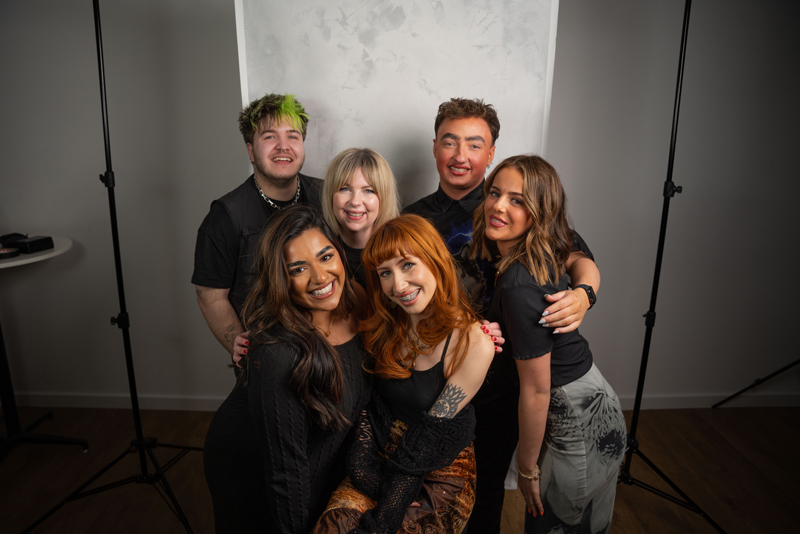

2024 #SKPCollective team
Following a fast-paced final audition day at Schwarzkopf Professional headquarters, the 2024 #SKPCollective team has been chosen. Out of the 12 talented finalists who showcased their skills and creativity, six social media-savvy stars have risen to the top, impressing the judges, including Creative HEAD’s digital director Kelsey Dring, with their passion for hairdressing and
their innovative approach to social media content creation.
The final auditions, held on Monday 8 April, commenced with a warm welcome from the Schwarzkopf Professional team, followed by the reveal of an exciting challenge. Each finalist was tasked with creating, editing, and posting an engaging reel within just one hour, using a box of Schwarzkopf Professional products. With an open brief emphasising the importance of showcasing their unique personality, the finalists rose to the occasion and delivered an impressive variety of content, ranging from hair transformations to ‘POV’ skits
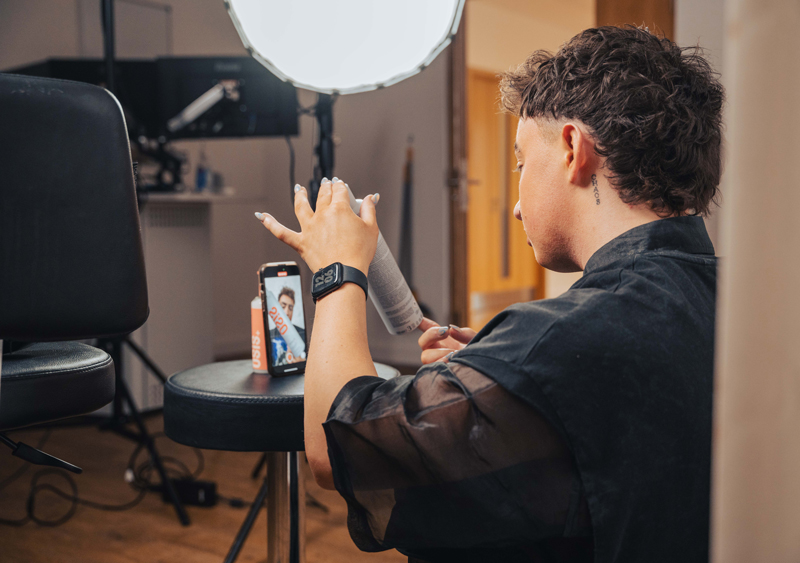
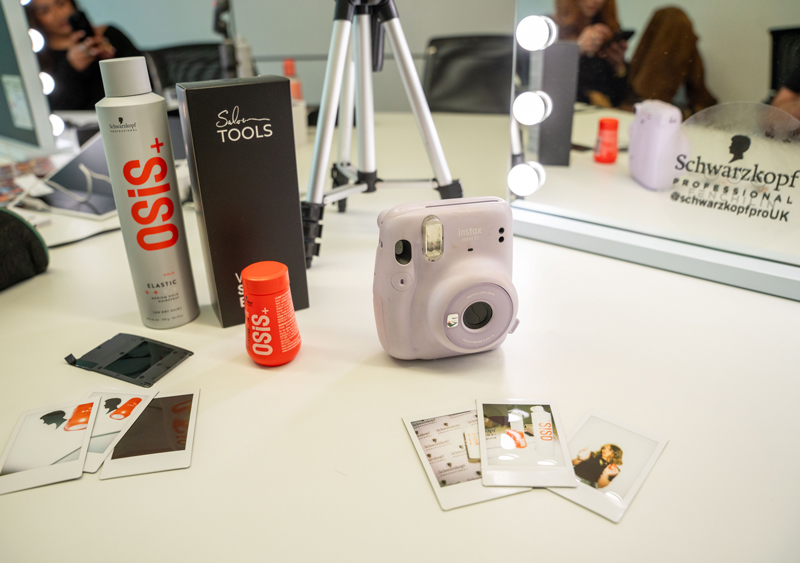
Following a brief lunch break, the finalists engaged in one-on-one interviews with the judging panel, where they demonstrated their social media expertise, shared their vision for the #SKPCollective team, and reflected on their experience throughout the day.
The standard of talent showcased during the auditions was seriously impressive, making the final decision incredibly difficult for the judging panel. However, after much deliberation, the six members of the new #SKPCollective team for 2024 were selected…
Meet the new #SKPCollective team:
Alex Melville from The Hair Club in Stirling – @_styledbyalex
Chantelle Jones from Seckingtons in Northampton – @chantellehaircraft
Grainne McClelland from Coventry – @grainnemcclelland_hair
Harry Watson from DooDahs Hair in Hertfordshire – @hairbyharryx
Tommy Hardy from House of Marshall in Falkirk – @tommyhardyhair
Vishali Visavadia from London Road Hair in Leicester – @vsvstylist
Year-long deal sees Noughties favourite become global ambassador
At the heart of Authentic Beauty Concept is a community, one that believes in the same shared values. Co-created with a unique hairdresser collective to start a new path to authentic beauty, this is a brand that values the real over the artificial. Think carefully selected, pure ingredients, authentic hairstyles suited to each individual, real and honest direct discussions around what is important – to stylists, to clients, to the wider world.
Creative HEAD hit up Las Vegas with Joy Salon Services – this is what we brought back (along with a lot of merch)

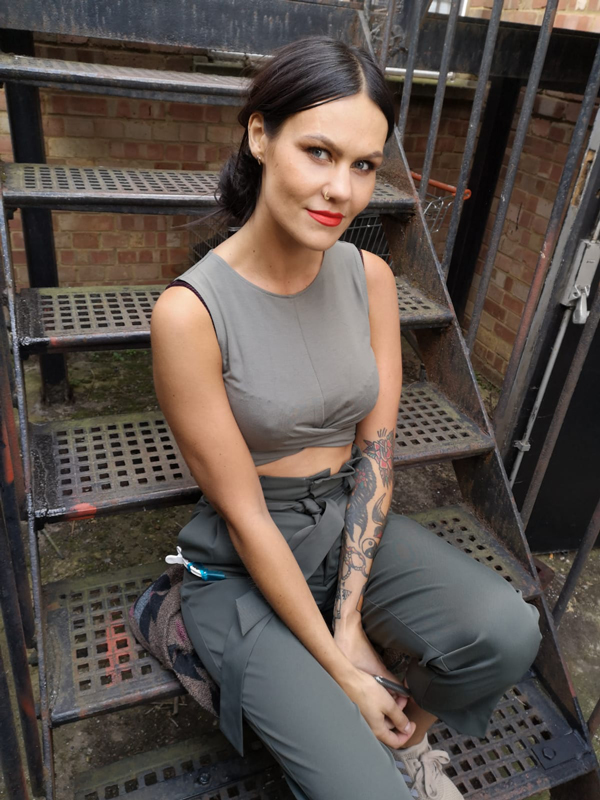
Laura Chadwick
With a background in fashion, I never imagined myself working on music videos.
However, fate had other plans, leading me on a journey filled with unexpected opportunities and thrilling experiences.
It all began during the Covid pandemic when I was brought in by a make-up artist to provide haircuts and styling for a music video shoot for Inhaler in Dublin. Despite the challenging circumstances, my skills as a qualified barber impressed the production team, opening doors to a world I had never considered.
Working on that first music video was a turning point for me. It made me realise that there was so much more to my craft than just fashion. Music videos offered a whole new realm of creativity and expression.
With my foot in the door, my journey in the music video industry continued to unfold. A contact in Sony recognised my talent and offered me opportunities to work with various music artists, ranging from emerging talents to established names. These experiences working with smaller artists gave me a solid foundation and understanding of the industry. I learned to adapt to different styles and visions, honing my skills along the way.
Becky Hill’s music video for Outside of Love
It was a connection through a stylist named Kyle Devolle that would change the trajectory of my career. Through Kyle, I was introduced to Becky Hill, a chart-topping artist known for her powerhouse vocals and dynamic performances. Working with Becky was like stepping into a whole new world. The scale of the productions was immense, with elaborate sets and breath-taking locations. It was an exhilarating experience, and I felt privileged to be a part of it.
Despite my initial focus on fashion, I have found a new passion in music videos. Each project brings its own challenges and rewards, but there’s something special about seeing your work come to life alongside the music. As I continue to make my mark in the music video industry, I remain grateful for the opportunities that have come my way. I never could have imagined this journey when I started out, but I’m grateful for every twist and turn that has led me here. My story serves as a testament to the power of following unexpected paths and embracing new opportunities. With passion and determination, there’s no telling where my journey will lead next.
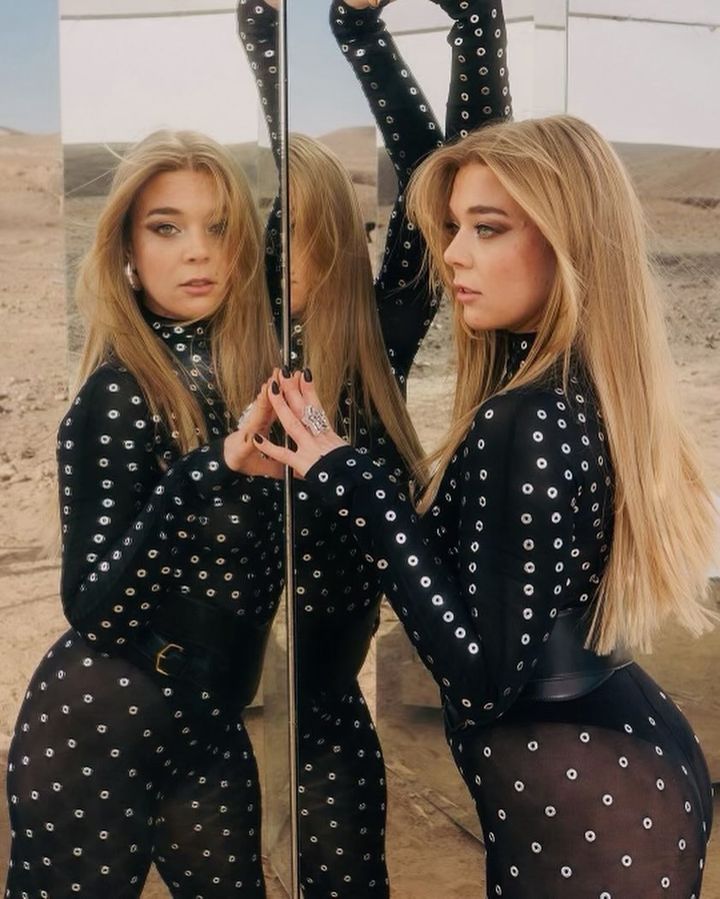
@hairbylaurachadwick


Yolanda Cooper
It was when she was at an airport in 2016 that Yolanda Cooper had her idea for her electrical tool, the SupernovaPRO. She was checking in for a flight with overweight baggage, mainly because of the number of different hair tools she was travelling with. ‘There’s got to be an answer for this’, she thought. It turned out there was. And it’s a game-changer.
The SupernovaPRO is the world’s first three-in-one hair styler combining a fully functioning straightening iron, curling tong and wave wand in one ultra-sleek, beautiful-to-behold tool. It comes with a whole host of first-to-market patented features, including revolutionary SmartSwitch technology that makes it the only hot styling tool with three independently powered functions; premium grade ceramic plates infused with Trionic technology that softens, smooths and hydrates the hair; and a patent-pending ergonomic DoublePivot system, which relieves pressure on the median nerve to reduce the risk of carpal tunnel syndrome – a condition especially prevalent in pro stylists.

The SupernovaPRO tool
Not bad for a young female entrepreneur from Belfast designing her first electrical tool! “I think going in blind to something allows you to be completely free of fear,” says Yolanda. “If you knew what you were getting into before you did these crazy things, half the time you wouldn’t do it because you’ve no idea how complex it is, how long these things take and how many reasons there are for it to fail. Some of the best entrepreneurs are the ones who just have no clue what they’re doing, they just go into it and commit to figuring it out later.”
Armed only with a sketch of what she felt the tool could look like, Yolanda set about hiring industry-leading industrial designers and engineers to turn her concept into a reality. It took five years to refine the tool mechanically and aesthetically as she constantly challenged her team to come up with the technology to match her ideas.
“Going in blind to something allows you to be completely free of fear”
“Very early on we realised that if this is going to be a professional tool, then three-in-one is brilliant but it can’t be a compromised experience – we have to make each of those tools incrementally better than what’s on the market,” says Yolanda. And I think I think that’s what we’ve done. So, straighteners have always been symmetrical and rectangular, but what if you need to get right into the baby hairs at the root? We made our straightener narrower at the tip, so that it allows you – for example – to detail short fringes and work with Type 3 and 4 hair.
Ceramic technology provides great negative ions into the hair, but how do we take that even further? I’m a trichologist, so that’s why I came up with the idea of taking a heat protection formula and infusing it into the plates to give superior shine. When it came to the tong, we changed the tip to a rubber material so that you can literally hold onto it, even when the temperature is set at 200˚C. And we spent a long time perfecting the exact torsion of the spring and the double-pivot system to make the tool more comfortable to use. Consumers might not notice that benefit, because they’re only going to use the tool for 20 minutes at a time, but hair pros, who are styling nine hours a day – they’re really going to see the difference.”
Proud that the SupernovaPRO is designed, engineered and manufactured in Great Britain, and fully aware that she is competing against some industry heavyweights, Yolanda is putting her experience as a former marketing director to good use. “Core to our communication and marketing strategy is a grassroots approach,” she says. “We have a programme called The Salon Spotlight, where we send our film crew into a salon to shoot collaborative content, including interviews with the stylists and footage of them styling their client’s hair in different ways. We can also create an event in the salon, where I and our head of engineering will come along and talk to guests. And the content we create can be used for a salon’s own social media campaign to drive awareness. We may not have the budgets that some of the big brands have, but what we do have is passion and agility and the desire to go and partner with salons on a one-to-one basis.”
And finally, why the name Supernova? “I’ve always been fascinated with astrology and stargazing,” says Yolanda. “And with SupernovaPRO we’re trying to create the biggest shining star in the industry. In space, a supernova is a cataclysmic explosion. And so I thought that was a cool name, because we are aiming to be the biggest thing in the industry. It’s quite fitting.”
Retailing at £299, SupernovaPRO is exclusive to salons across the UK and Ireland. To become a stockist or purchase at the wholesale price of £199 plus VAT, visit supernovahairtools.com/pages/creativehead